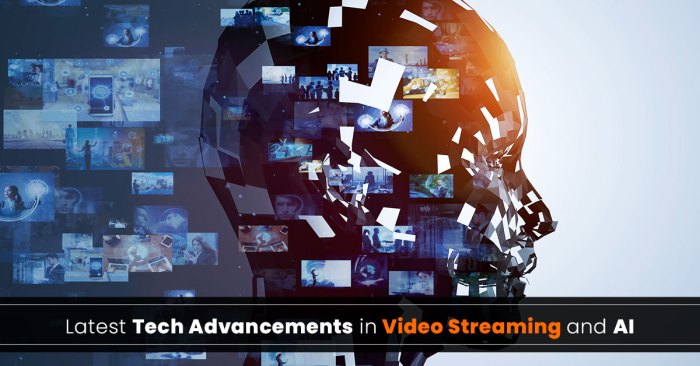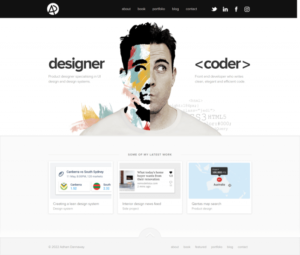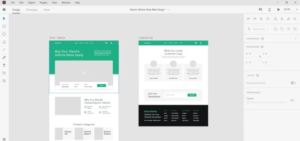
AI in video streaming personalization is revolutionizing how viewers engage with content, bringing a tailored experience that caters to individual preferences. With advanced algorithms analyzing user behavior, streaming platforms can now offer recommendations that feel personal and relevant, enhancing overall satisfaction and retention.
As audiences seek more meaningful connections with their favorite shows and movies, AI steps in to create a seamless viewing journey. Major streaming services are leveraging these technological advancements to analyze patterns, predict interests, and curate content that resonates, ultimately shaping the future of entertainment.
AI in Video Streaming Personalization

The integration of artificial intelligence in video streaming platforms has revolutionized how content is delivered and consumed. AI algorithms play a pivotal role in enhancing user experiences by personalizing content based on individual viewing habits, preferences, and behaviors. This tailored approach not only increases user satisfaction but also boosts engagement and retention for streaming services.AI algorithms leverage vast amounts of user data to create personalized experiences that cater to individual tastes.
These algorithms analyze viewing history, search behavior, and even the time spent on different genres to curate content suggestions that resonate with users. The goal is to eliminate the overwhelming choice and provide a seamless viewing experience, making it easier for users to discover new content they are likely to enjoy.
Personalized Content Recommendations
Major streaming services utilize AI-driven personalization to enhance user engagement and satisfaction. The following are examples of how leading platforms implement personalized content recommendations:
- Netflix: Netflix employs sophisticated algorithms that analyze user behavior, including previously watched shows and user ratings, to recommend titles. The platform’s “Top 10” feature showcases popular content tailored to each user’s viewing preferences.
- Amazon Prime Video: Amazon uses collaborative filtering and machine learning techniques to suggest movies and shows based on past purchases and views. This allows users to discover content that aligns with their interests.
- Disney+: Disney+ personalizes recommendations by considering users’ viewing history as well as the time of year, highlighting seasonal content like holiday specials based on user preferences.
Implementing AI-Driven Personalization Features
To successfully integrate AI-driven personalization features into a video streaming service, several key methods can be adopted. Each method contributes to a more engaging user experience by leveraging data effectively.
- Data Collection: Gathering extensive data on user interactions is crucial. This includes tracking viewing history, user ratings, and search queries to understand preferences.
- Machine Learning Models: Employing machine learning models that can identify patterns in user behavior helps in predicting future viewing habits, enabling more accurate recommendations.
- A/B Testing: Implementing A/B testing allows streaming platforms to evaluate different recommendation engines and user interfaces to determine which ones yield better engagement and satisfaction rates.
- User Feedback Loop: Incorporating user feedback directly into the recommendation system fine-tunes the algorithms, ensuring they are responsive to changing preferences over time.
The potential of AI in video streaming personalization not only enhances user experience but also drives the success of streaming platforms by creating a more engaging and tailored viewing environment.
Impact of AI on Video Marketing

The landscape of video marketing has been dramatically reshaped by the advent of artificial intelligence technologies. Businesses are increasingly leveraging AI to enhance their marketing strategies, enabling them to reach more targeted audiences and improve viewer engagement. This transformation is not just about creating content; it’s about making informed decisions that resonate with viewers and drive results.AI plays a crucial role in optimizing video content by analyzing data to tailor marketing efforts to specific audience segments.
By understanding viewer preferences and behaviors, brands can create personalized experiences that are more likely to convert viewers into customers. This level of customization was previously unattainable, but AI technologies allow marketers to craft messages that speak directly to individual interests and needs.
Utilization of AI in Content Optimization
AI assists marketers in refining their video content strategies by leveraging vast amounts of data to identify trends and audience preferences. The ability of AI to process and analyze viewer data ensures that the right content is shared with the right audience at the right time. Here are key areas where AI optimizes video marketing:
- Content Personalization: AI algorithms analyze users’ past behavior, such as videos watched and engagement levels, to recommend personalized content that aligns with individual interests.
- A/B Testing Automation: AI can automate the A/B testing process for video formats, lengths, and titles, identifying which variations perform best without extensive manual effort.
- Optimization: AI tools optimize video metadata, such as titles, descriptions, and tags, improving visibility in search engines and increasing organic viewership.
Analysis of Viewer Engagement
Understanding viewer engagement is vital for continuous improvement in video marketing strategies. AI technologies provide robust analytics to monitor and assess how audiences interact with video content. This analysis helps marketers adapt their strategies based on real-time feedback and engagement metrics.AI utilizes machine learning to track various engagement metrics such as view duration, click-through rates, and social shares. Through these insights, marketers can make the following adjustments:
- Content Refinement: By analyzing which segments of a video retain viewer attention, brands can refine future content to focus on more engaging topics or formats.
- Feedback Loop Creation: AI can automatically collect and analyze viewer feedback, allowing marketers to adjust campaigns on-the-fly based on audience reactions.
- Predictive Analytics: AI’s predictive capabilities enable marketers to forecast trends and viewer behaviors, guiding content creation and strategic planning.
“The integration of AI in video marketing not only enhances personalization but also significantly improves engagement by providing actionable insights into viewer behavior.”
The Role of Social Media in Video Streaming
The intersection of social media and video streaming has transformed how audiences engage with content. As platforms evolve, they offer various features that enhance user interaction, leading to a more dynamic viewing experience. By integrating social media aspects into video streaming services, companies not only boost user engagement but also create communities around shared interests and content.The integration of social media with video streaming services allows users to share content instantly, comment in real time, and participate in discussions.
For instance, platforms like Twitch and YouTube incorporate live chat features, enabling viewers to communicate during streams. This interaction fosters a sense of community, making viewers feel connected to both the content and other users. Additionally, social media platforms allow for seamless sharing of video content across different networks, amplifying reach and visibility.
Effectiveness of Different Social Media Platforms in Promoting Video Content
Each social media platform has unique strengths, making them more or less effective for promoting video content. Understanding these differences can significantly enhance marketing strategies.
With its massive user base, Facebook excels in targeting specific demographics through ads. Video content can go viral through shares and likes, making it a powerful tool for initial reach.
The visual nature of Instagram supports short, engaging videos. Reels and Stories are particularly effective for capturing attention quickly and driving traffic to streaming platforms.
This platform is valuable for real-time engagement. Short video clips can be quickly shared and discussed, making it ideal for live events or breaking news content.
TikTok
Known for its short-form video, TikTok has revolutionized video marketing by encouraging user-generated content. Its algorithm promotes discovery, allowing potentially viral content to reach vast audiences rapidly.To maximize the visibility of video streaming content through social networking, employing strategic methods is essential. For instance, leveraging user-generated content can create a buzz around video releases. Encouraging fans to share their experiences or reactions can expand reach organically.
Additionally, collaborating with influencers who resonate with target audiences can enhance credibility and attract new viewers. An effective promotional strategy could include:
Regular updates
Posting behind-the-scenes content or sneak peeks of upcoming videos creates anticipation.
Engagement campaigns
Encouraging viewers to participate in polls or challenges related to the video content can foster deeper interaction.
Cross-promotion
Sharing video content across multiple platforms ensures that audiences on different networks have access to the same material, increasing overall visibility.
“Social media is the ultimate equalizer. It gives a voice and platform to anyone willing to engage.”
By understanding and utilizing the strengths of various social media platforms, video streaming services can significantly enhance their visibility and audience engagement.
Last Word
In conclusion, the integration of AI in video streaming personalization is not just about enhancing user experience; it’s about crafting a unique journey that keeps viewers coming back for more. As these technologies continue to evolve, they promise to further bridge the gap between user expectations and the content delivered, making every viewing experience feel special and engaging.
Essential FAQs
How does AI enhance content recommendations?
AI analyzes user behavior and preferences to suggest tailored content, improving engagement.
What are some examples of AI-driven personalization?
Platforms like Netflix and Hulu use AI to recommend shows based on viewing history and ratings.
Can AI adapt in real-time to user preferences?
Yes, AI can continuously learn from user interactions and adjust recommendations accordingly.
What data does AI use for personalization?
AI utilizes viewing history, search behavior, and user ratings to curate personalized content.
Is AI personalization beneficial for content creators?
Absolutely, as it helps creators understand audience preferences and tailor content to meet their needs.





